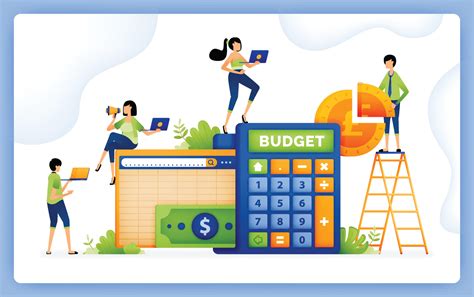Why an Emergency Fund is Non-Negotiable for Every Man
Life throws curveballs, and while we often plan for success, we must also prepare for the unexpected. For men, an emergency fund isn’t just a safety net; it’s a foundation for financial stability, freedom, and peace of mind. Whether it’s an unexpected job loss, a medical emergency, or a major car repair, having readily available cash prevents debt, stress, and compromised goals. Building this fund fast requires discipline, a clear strategy, and a willingness to make smart financial choices. Let’s dive into how you can get there.

1. Get a Crystal-Clear View of Your Finances
Before you can budget effectively, you need to know exactly where your money is going. This step is often overlooked but is the bedrock of rapid fund building.
Track Every Penny for a Month
- Manual Tracking: Use a spreadsheet or notebook to log every expense, no matter how small.
- App-Based Tracking: Leverage budgeting apps (e.g., Mint, YNAB, Personal Capital) that link to your accounts and categorize spending automatically.
Understanding your spending habits reveals patterns and highlights areas where you might be unknowingly bleeding cash. This isn’t about judgment; it’s about information gathering.
2. Create a Lean, Mean Budget Machine
Once you know where your money goes, it’s time to tell it where to go. The goal here is to prioritize saving for your emergency fund above almost everything else.
Adopt a Budgeting Rule
- The 50/30/20 Rule: Allocate 50% of your income to needs, 30% to wants, and 20% to savings and debt repayment. For fast fund building, you might aim for 30-40% towards savings temporarily.
- Zero-Based Budgeting: Every dollar has a job. Assign every cent of your income to an expense, saving goal, or debt payment. This leaves no room for ambiguous spending.
Distinguish Needs vs. Wants
Be brutally honest. Needs are essentials (housing, utilities, food, transportation, basic healthcare). Wants are everything else (dining out, entertainment, subscriptions, new gadgets). For rapid emergency fund growth, aggressively cut down on wants.

3. Aggressively Slash Expenses
This is where speed comes in. The more you cut, the faster your fund grows.
- Identify High-Impact Cuts: Review your tracking data. Are there recurring subscriptions you don’t use? Can you cook more meals at home? Can you temporarily scale back on expensive hobbies or nights out?
- Negotiate Bills: Call your internet, cable, and insurance providers. See if you can get a better rate or package. A quick phone call can save hundreds annually.
- The ‘No-Spend’ Challenge: Designate specific days or even weeks where you spend absolutely no money on non-essentials. This builds discipline and rapidly boosts savings.
- Transportation Hacks: Can you carpool, cycle, or use public transport more often?
4. Boost Your Income (Even Temporarily)
While cutting expenses is crucial, increasing your income accelerates the process exponentially.
- Side Hustles: Utilize your skills. Freelance, drive for a ride-share service, deliver food, do handyman work, tutor, or consult. Even a few extra hours a week can add significant cash.
- Sell Unused Items: Declutter your home and list items on platforms like eBay, Facebook Marketplace, or local consignment shops. That old gaming console, unused tools, or designer clothes can become emergency fund dollars.
- Overtime at Work: If your job offers overtime, take advantage of it. Make it clear that all extra earnings go directly into your emergency fund.

5. Automate Your Savings (Set it and Forget It)
This is arguably the most powerful strategy for consistent and fast emergency fund growth.
- Automatic Transfers: Set up a recurring transfer from your checking account to a dedicated savings account (preferably high-yield) every payday. Treat this transfer like a non-negotiable bill.
- Direct Deposit Split: Many employers allow you to split your direct deposit into multiple accounts. Have a portion of each paycheck sent directly to your emergency fund account.
The goal is to make saving effortless and immune to last-minute spending temptations. Your emergency fund should be in an account that is separate from your daily checking account, making it harder to access for impulse purchases.

6. Stay Motivated and Track Your Progress
Building an emergency fund quickly is a marathon, not a sprint. Maintaining momentum is key.
- Set Clear Goals: How much do you want in your fund? By when? Break it down into smaller, achievable milestones.
- Visualize Your Goal: Put a sticky note on your mirror, set a phone reminder, or track your progress on a visible chart. Seeing your fund grow is incredibly motivating.
- Regular Reviews: Dedicate 15-30 minutes each week or month to review your budget, check your progress, and make adjustments.
- Reward Milestones (Wisely): When you hit a major milestone (e.g., $1,000, $5,000), allow yourself a small, budget-friendly reward to celebrate your hard work.
Conclusion: Take Control and Build Your Financial Shield
Building an emergency fund fast is entirely within your control. It demands an honest look at your current habits, a commitment to cutting unnecessary expenses, an open mind to boosting income, and the discipline to automate your savings. By embracing these strategies, you’re not just saving money; you’re building a robust financial shield that protects you, reduces stress, and empowers you to pursue your long-term goals with confidence. Start today, and watch your financial stability grow.





